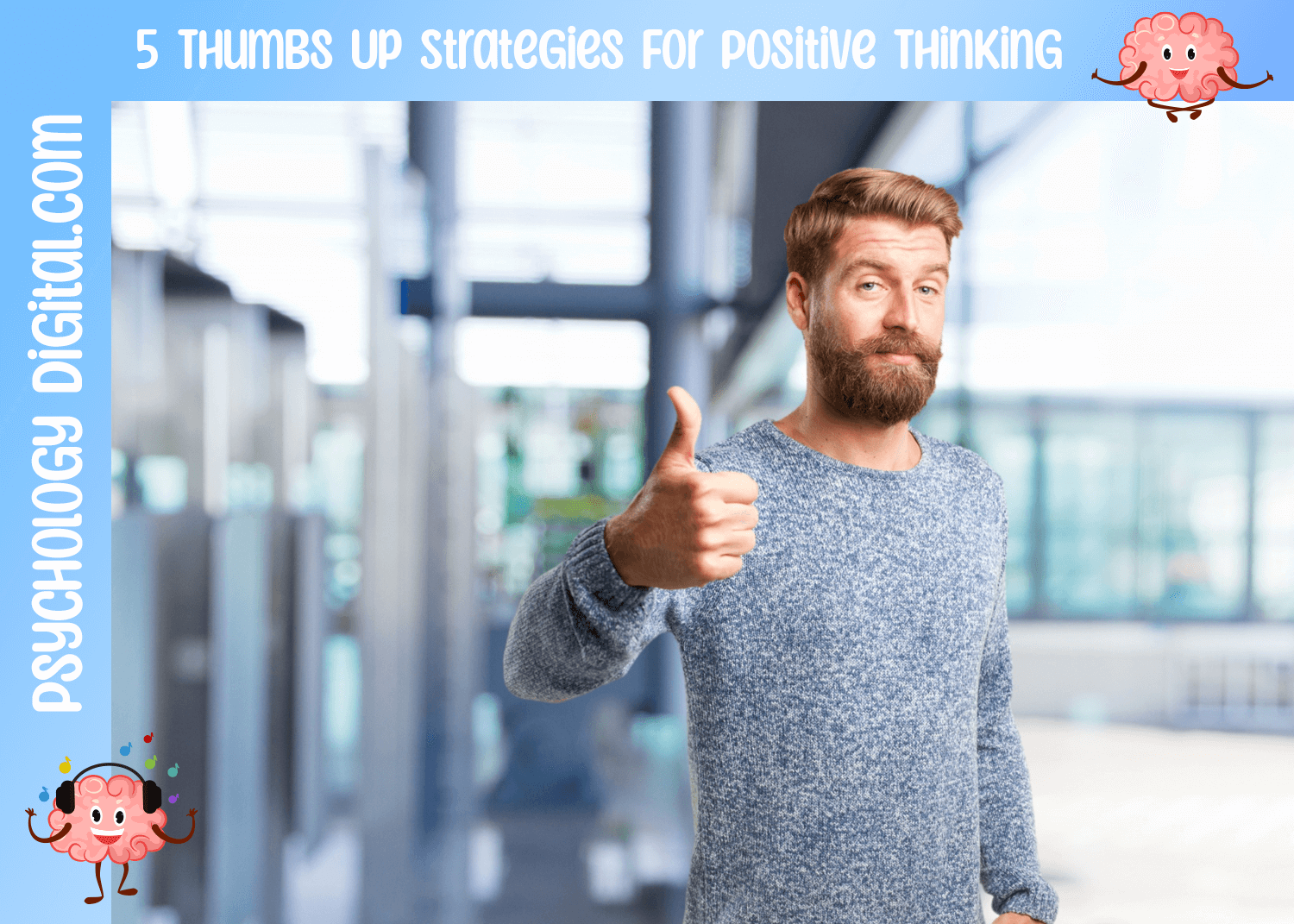
Studies on mood-as-information indicate that individuals’ cognitive processing styles differ depending on their mood. For instance, a positive mindset leads to global and heuristic information processing, while a negative attitude has the opposite effect.
Why do we value negative news over-optimism? According to mounting research, it could have neurological roots.
The Neuroscience of Positivity
Positive thinking is an effective way to enhance cognitive well-being. It activates certain brain chemicals known as neurotransmitters serotonin and dopamine – better known as happiness or feel-good hormones – while decreasing cortisol or stress hormone levels. These brain chemicals promote creative and rapid thought processes, memory retention, multitasking skills, and better processing of multiple concepts simultaneously. Positive thinking can strengthen immunity against infections or cancerous tumors.
Past studies have demonstrated how positive emotions broaden people’s sense of possibility and open their minds to new options. When people experience positive emotions, their mesolimbic system – composed of dopamine-producing cells in the brain that connect to areas associated with reward and motivation – becomes active. This suggests that positive emotions encourage individuals to take more risks while developing skills they will later use compared to negative ones that narrow focus only one area at a time.
Stress inhibits our mesolimbic system, making us less creative and more cautious when making stressful decisions. You might have found yourself in this position unknowingly, and some individuals can have difficulty thinking positively when faced with stressful circumstances – they tend to focus solely on seeing negative aspects rather than ways to improve them.
To combat this, it is crucial that we actively search for solutions instead of dwelling on problems. Hence, developing R/S habits such as meditation, gratitude, and positive self-talk is essential to developing resilient thinking and a healthy mindset. Surround yourself with people who will help foster this, and you’ll not only become more resilient but can also boost team morale and performance levels, leading to increased satisfaction and success at work.
Mindfulness Techniques
Mindfulness techniques involve practicing being present and accepting one’s thoughts without judgment, either through meditation (yoga or tai chi, for instance) or other disciplines like prayer and guided breathing exercises. Mindfulness practices have also become popularly combined with psychotherapy, such as cognitive behavioral therapy, which works to identify and modify unhelpful thought or behavioral patterns. Many mindfulness centers are opening worldwide as more and more people find the benefits life-changing.
Studies have linked mindfulness with improved mental health, including reduced rates of depression and stress, Alzheimer’s disease prevention by slowing cognitive decline (Coholic & Abramiuk 2015), healthier hearts than non-mindful people – in one case shown through increasing respiratory sinus arrhythmia associated with improved heart function and more remarkable survival after heart attack (Berger et al. 2016).
Mindfulness-based stress reduction (MBSR), an eight-week program combining CBT and yoga and mindfulness-based cognitive therapy (MBCT), incorporates elements from both programs. Both can help alleviate anxiety and depression symptoms and increase sleep quality and attention span.
Research indicates that mindfulness can improve self-esteem, empathy, social and emotional learning, emotion regulation, and memory (Kabat-Zinn et al., 2003). Mindfulness may assist with treating addiction by helping people tolerate cravings more easily while developing greater insight into what’s happening within them.
Mindfulness has also reduced rumination, increased metacognitive awareness, and facilitated post-traumatic growth among cancer patients (Zernicke et al. 2016). Research on children who underwent mindfulness training found they were less likely to be bullied by peers and had better coping and social skills than kids in a control group (Dekeyser & Cohen 2017).
Once you have the hang of mindfulness, I found it easy to work on your priorities, goals, or important things, and you can play your favorite music in the background and enjoy that with the same effect. Mindfulness, once learned, is a mindset and attitude, not just a short-term technique.
Cognitive Reframing
Cognitive reframing is an integral component of many forms of talk therapy, such as cognitive behavioral therapy (CBT). CBT helps treat mental health conditions caused by negative thought patterns like cognitive distortions.
Cognitive reframing works on the principle that you can reevaluate reality and change your perspective to handle situations better when overwhelmed by negative thought patterns. For instance, feeling down on yourself helps remind yourself that you’ve gone through more challenging times but have emerged stronger from these trials. How many of us, especially those diagnosed, have had tough times?
If you have, cognitive reframing is an effective strategy that you can employ independently or as part of therapeutic approaches like Cognitive Behavioral Therapy (CBT) or Acceptance and Commitment Therapy (ACT). Many studies have revealed that individuals who engage in positive self-talk frequently report higher positive emotions daily. If you know any millionaires or highly successful people, stop them for a moment and ask how often they think positively.
No matter which cognitive reframing techniques you choose, the key to successful practice is repetition – over time and when confronted by challenging situations, your healthier thoughts will become your default mindset.
One form of cognitive reframing known as positive reappraisal involves thinking more positively about negative or challenging situations, for instance, when hurt after a break-up – consider what opportunities exist or lessons have been learned through that relationship.
Cognitive reframing also involves challenging your negative thoughts with alternative explanations. For instance, when having difficulty believing you should undertake something that maybe scares you at first, ask yourself, “Are there other ways this could be interpreted that can benefit me?” – you might be amazed at your answer, which you’ll think of right away.
Harnessing Positive Affirmations
Positive affirmations are an easy and effective self-help strategy for helping to put this phrase into action. Through daily repetition of affirmations statements – aloud or internally – positive affirmations help build up your confidence and belief in yourself and your abilities, helping reduce anxiety, combat depression, and break bad habits. It has even been shown to reduce anxiety levels significantly while simultaneously combatting negative patterns!
This is one of the most fun strategies for keeping your brain positive. You feel great when you say: “I like myself,” or “I’m the best,” or “I can do this!” These will keep you motivated if you say them multiple times throughout the day.
Affirmations work best when combined with other positive thinking and goal-setting techniques. Visualization techniques can be instrumental when used alongside claims to create a clearer image of the desired result. Affirmations also help overcome challenging emotions like anger, frustration, and impatience.
When selecting positive affirmation statements, ensure they are tailored to your goals and beliefs. Choose believable words rather than vague phrases like “I can do it.” Also, focus on using present tense language when reading your affirmations statements to increase brain processing of positivity.
When practicing affirmations, try to find a calm and quiet space free from distractions or interruptions – such as your bedroom or outdoor patio space – where there will be no interruptions. Reading aloud also helps reinforce positive messages in both mind and body; for beginners to practice affirmations, starting small before increasing aspirational statements gradually is recommended. By integrating positive affirmation strategies into everyday life, you’ll see an incredible shift in thought patterns and cognitive well-being.
The Power of Gratitude
Gratefulness may seem like another polite gesture or a way to end a conversation, but it’s an invaluable way to improve cognitive well-being. Focusing on what you have instead of what’s lacking can reduce stress and increase happiness; showing appreciation towards others makes you more approachable and strengthens relationships.
Practice gratitude strengthens social bonds by increasing people’s willingness to spend time with appreciative individuals who support their goals and needs. Being appreciative also makes you more empathetic, which improves communication and understanding between individuals. Furthermore, being grateful toward someone can cause the brain to release feel-good chemicals like dopamine and serotonin, which boosts mood and self-esteem.
Psychologists Robert A. Emmons from the University of California Davis and Michael McCullough from the University of Miami have conducted several studies exploring gratitude’s impact on mental health. One such experiment had participants keep a gratitude journal detailing events from the previous week that made them grateful. Another group wrote down any daily irritations or events that displease them, while another listed everyday situations without emphasizing whether they were positive or negative experiences.
Four and 12 weeks post-experiment completion, those who kept gratitude journals reported significantly better psychological health than both other groups. Researchers explained this trend as gratitude activating ventral and dorsal medial prefrontal cortex regions involved with reward, morality, social bonding, and positive emotions in your brain.
Conclusion
In reflecting on the wisdom of our predecessors, it’s evident that the roots of contemporary positive thinking trace back to luminaries like Norman Peale. His seminal work, ‘The Power of Positive Thinking,’ is a testament to the age-old belief in optimism and its transformative power. As we navigate modern challenges, turning to such foundational concepts reminds us that positivity is not merely a trend but a timeless tool for personal growth and resilience. I found this article in Science Daily. I didn’t think it was that groundbreaking! It’s well-worn news already.



